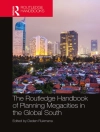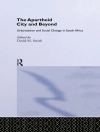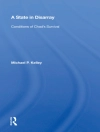Geomorphology is the study of the Earth′s diverse physical land-surface features and the dynamic processes that shape these features. Examining natural and anthropogenic processes, The SAGE Handbook of Geomorphology is a comprehensive exposition of the fundamentals of geomorphology that examines form, process, and applications of the discipline.
Organized into five substantive sections, the Handbook is an overview of:
• Foundations and Relevance: including the nature and scope of geomorphology; the origins and development of geomorphology; the role and character of theory in geomorphology; geomorphology and environmental management; and geomorphology and society
• Techniques and Approaches: including observations and experiments; geomorphological mapping; the significance of models; process and form; dating surfaces and sediment; remote sensing in geomorphology; GIS in geomorphology; biogeomorphology; human activity
• Process and Environment: including the evolution of regolith; weathering; fluids, flows and fluxes; sediment transport and deposition; hill slopes; riverine environments; glacial geomorphology; periglacial environments; coastal environments; aeolian environments; tropical environments; karst and karst processes
• Environmental Change: including landscape evolution and tectonics; interpreting quaternary environments; environmental change; disturbance and responses to geomorphic systems
• Conclusion: including challenges and perspectives; and a concluding review
The Handbook has contributions from 48 international authors and was initially organized by the International Association of Geomorphologists. This will be a much-used and much-cited reference for researchers in Geomorphology, Physical Geography and the Environmental Sciences.
Содержание
Introduction to the Discipline of Geomorphology — Kenneth J. Gregory and Andrew Goudie
PART ONE: FOUNDATION AND RELEVANCE
Geomorphology: Its Early History — Andrew Goudie
The Nature of Explanation in Geomorphology — Keith Richards and Nicholas J. Clifford
The Role and Character of Theory in Geomorphology — Bruce L. Rhoads and Colin E. Thorn
Geomorphology in Environmental Management — Peter W. Downs and Derek B. Booth
Geomorphology and Society — Mathias Kondolf and Hervé Piégay
PART TWO: TECHNIQUES AND APPROACHES
Observations and Experiments — Michael Church
Geomorphological Mapping — Mike J. Smith and Colin F. Pain
The Significance of Models in Geomorphology: From Concepts to Experiments — Nicholas A. Odoni and Stuart N. Lane
Process and Form — Richard Huggett
Dating Surfaces and Sediments — Tony G. Brown
Remote Sensing in Geomorphology — Tom G. Farr
Geographic Information Systems in Geomorphology — Takashi Oguchi and Thad A. Wasklewicz
Biogeomorphology — Heather Viles
Human Activity and Geomorphology — Dénes Lóczy and László S to
PART THREE: PROCESS AND ENVIRONMENTS
The Evolution of Regolith — Graham Taylor
Rock Surface and Weathering: Process and Form — David A. Robinson and Cherith A. Moses
Fluids, Flows and Fluxes in Geomorphology — André G. Roy and Hélène Lamarre
Sediment Transport and Deposition — Jeff Warburton
Hillslopes — David Petley
Riverine Environments — Jim Pizzuto
Glacial Geomorphology — John Menzies
Periglacial Environments — Hugh French
Coastal Environments — Colin D. Woodroffe, Peter J. Cowell, Mark E. Dickson
Aeolian Environments — Joanna E. Bullard
Tropical Environments — Michael Thomas and Vishwas Kale
Geomorphology Underground: The Study of Karst and Karst Processes — D. C. Ford, and P. W. Williams,
PART FOUR: ENVIRONMENTAL CHANGE
Landscape Evolution and Tectonics — Paul Bishop
Interpreting Quaternary Environments — Anne Mather
Environmental Change — Martin Williams
Disturbance and Responses in Geomorphic Systems — Jonathan D. Phillips
PART FIVE: CONCLUSION
Challenges and Perspectives — Mike Crozier, P. Bierman, Andreas Lang and Victor R. Baker
Conclusion — Kenneth J. Gregory and Andrew Goudie
Об авторе
Andrew Goudie is Professor of Geography at the University of Oxford and President of the British Institute in Eastern Africa.












